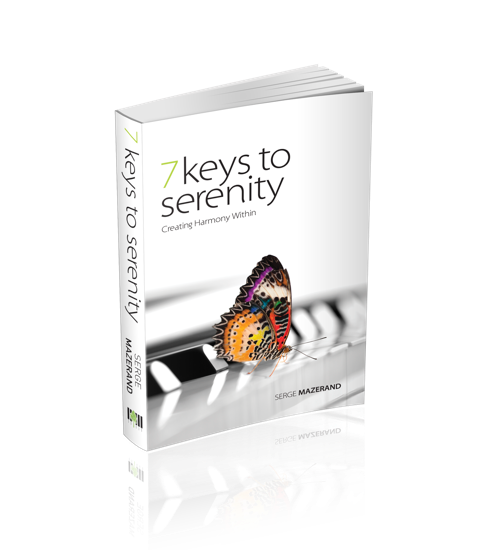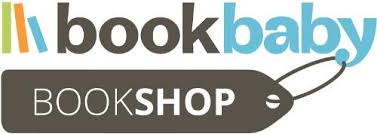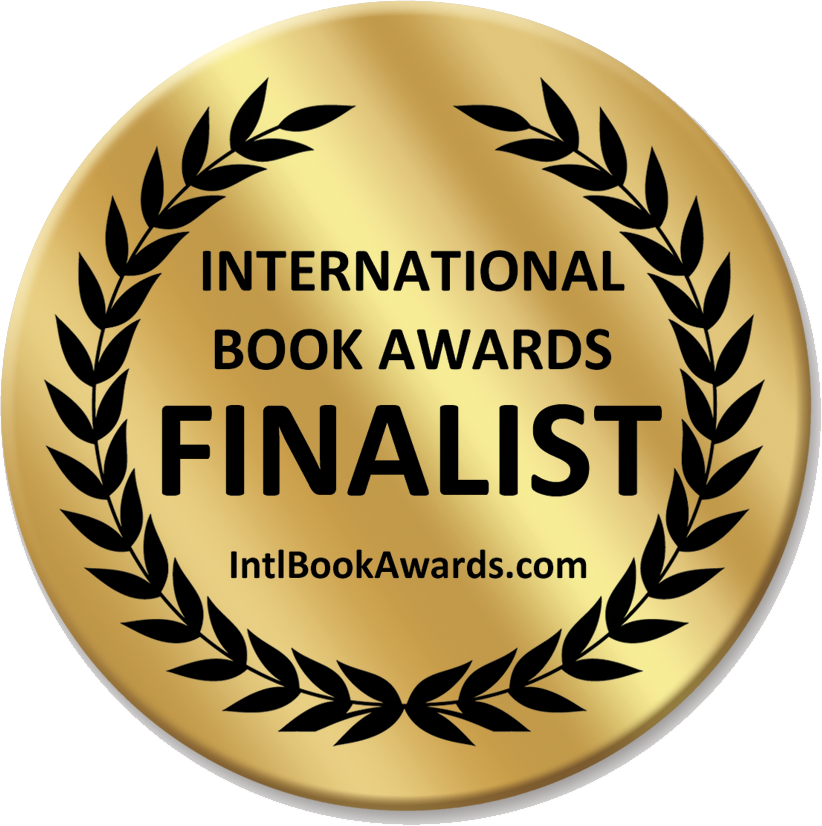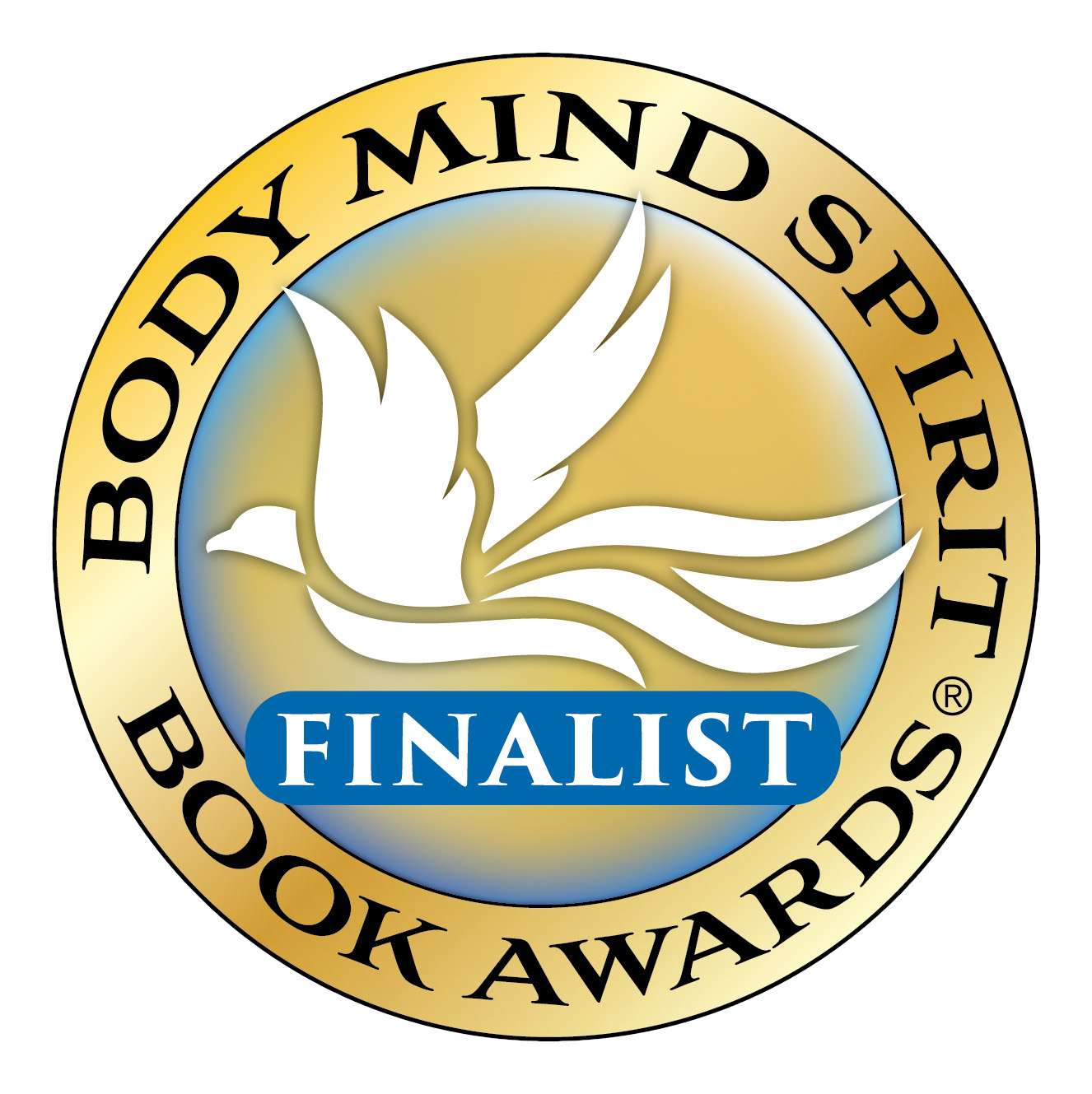7 Keys to Serenity
Creating Harmony Within

Perhaps more importantly, we have within us extraordinarily powerful instruments: our brains and hearts. The brain is the keyboard where we play our mind’s compositions. The heart is the metronome that beats the rhythm of our emotions, the soundboard that amplifies the subtle music that plays within us.
We have all we need to create either beautiful music or a cacophony. What does it take to create harmony?
In this insightful musical perspective on creating true happiness, pianist, recording artist and composer Serge Mazerand transposes harmony onto the score of everyday living. Playing the seven keys to serenity, empowers you to access the transformative potential of awareness, creativity, conscious choice and change; to apply alignment, balance and coherence; to harness discipline and implement a mindful, synergistic strategy of physical, mental, emotional and spiritual self-care.
To play life by heart.
In the face of today’s many disruptions and uncertainties, this book inspires readers to shift into a new way of thinking where stress and anxiety have no power; to create resilience, clarity and effortlessness; to embrace the art of conscious living.
To be the composer and the conductor of your life.
Online Bookstores
Retail Bookstores*
Chapters Stores
Visions Bookstore & Gifts
New Westminster, BC V3L 3A8
The Divine Mine South Location
Books and Co Quesnel
Excerpt
Read a Preview
Prelude
Strands of fog still veiled the shoreline when they reached their destination on the edge of a familiar thick clump of waterweeds. After the boat was anchored, they sat motionless in the serene embrace of the early morning quietude, enchanted by the magic of dawn, the subtle unfolding of night into day, a symphony of sounds and sights that stirred their souls in unison.
From the heart of the forest, a cuckoo called, its joyful voice echoing over the watery stillness. Mallards burst into flight from their hiding places in the reeds, and grey herons landed in the lush canopy of oak trees, feeding their eager, peeping young. In shoreline bushes, songbirds greeted the new day with a concert of their own, celebrating the awakening of nature.
Fascinated, the little boy now watched the sun rise over the forest, a sliver of white gold imperceptibly growing into the fullness of a fiery ball, flooding the waterscape with glorious new light. Beyond the anticipation of catching his first fish, he felt a sense of deep connection, of belonging, of being at one with the water. A lifelong kinship with nature was born.
* * *
Back from the lake cottage, in his parents’ home in the city, in utter surprise, the little boy discovered an imposing new presence gracing the living room. Another gift stood, waiting. No one in the family practised the piano nor had anyone ever shown the slightest interest in doing so. As he tentatively climbed the three-legged spiral stool, his father opened the lid, and the little boy stared, mesmerized, at the dazzling display of ivory and ebony. Hesitantly, with one finger, he poked the keys and felt even more entranced by the sounds they produced.
Mrs. Rose, his charming piano teacher, contributed more than a little to his eagerness to learn to play. He fell in love with her graceful figure at the piano, her ponytail swaying from side to side, and he watched in awe as she performed the pieces he was to study, her long, elegant fingers gliding over the keyboard smoothly and expressively. Besides the gruelling scales and practice she imposed on him and despite the mortifying clipping of his fingernails that stubbornly always seemed to grow too long, she knew how to inspire him. Her soulful interpretations of Chopin and Schubert lit his heart on fire.
As the years unfolded between urban life and his parents’ hideaway at the lake, music and nature came to define the boy’s world, interwoven in exquisite harmony. All his school vacations were spent at the cottage, and fishing had grown into a passion for him. He went on his own now, on foot, to some secret places he had discovered along the shoreline. His fishing spots became a refuge, sacred spaces where he could escape the overprotective attention of his neurotic mother and the authoritarian, disciplined ways of his father.
At dawn and often into dusk, he’d be watching for the float on his line to move and betray the huge carp in the lake as they nibbled at small potatoes he had carefully steamed to just the right consistency. The fish were a fickle bunch, sensitive to light, sound, wind, barometric pressure and moon phases. The boy learned to become attuned to their rhythms and moods, and with time, he became proficient at catching them. Rainy days were their favourite and thus they became his too. Huddled in his rubber-coated jacket, he would sit for hours, motionless, listening to, feeling and watching raindrops drum the quiet surface into bubbles—a natural meditation of sorts, even though at the time he didn’t know what meditation was.
Awakening to the sobering reality of school and the ordinariness of urban life, he cultivated his kinship with nature through the poetry of Romantic music. Sensing his affinity, Mrs. Rose chose pieces she knew would strike a chord with her young pupil: Mendelssohn’s Songs without Words, the first movement of Beethoven’s Moonlight Sonata and Chopin’s Nocturnes. Beyond all, it was Schubert’s Lieder and Impromptus that became the boy’s favourites; divine, earthy melodies, vibrant with the murmur of brooks and birdsong, a moving reflection of the composer’s emotions as he wandered through the Austrian countryside; music of a tormented soul that resonated overwhelmingly with the tender feelings stirring the young boy’s own.
Introduction
The quest for inner peace goes back to the dawn of time. And yet, like the butterfly of happiness, inner harmony seems to have become ever more elusive to humankind. Is it the exclusive purview of a few enlightened sages who are, by some magic, able to escape the entanglements of life? Or is this inner quietude, this serenity, available to all of us, albeit perversely veiled by a relentless search for what we falsely believe to be happiness and freedom?
My own existence has long been dominated by a visceral drive to pursue both. Fooled by a forceful and hedonistic puppet master, I spent almost my entire existence travelling to exotic shores, flitting here and there, an insatiable sybarite whose only goal was to indulge in the many nectars life constantly tempts us with. In my mind there was no doubt I had composed a beautiful and successful life “symphony,” and yet, when I finally paused to listen more carefully, to my dismay, I realized that I had been largely oblivious to the subtle inner cacophony I had unconsciously created.
This belated awareness caused me to feel as if I had awoken from a long slumber. Many people get wakeup calls through a personal crisis, an accident, a life-threatening illness or a heartbreaking loss. I was no exception. Some of these calls were quite jarring; most, however, were subtle in the scheme of things, and so I merely kept slumbering through most of my life.
That is, until one extraordinary day, when synchronicity led me to settle on the banks of a magical river. It murmured and spoke to me through its riffles and inspired me to reconnect with my God-given childhood gift of music. The keys of my newly acquired grand piano unlocked a long-overdue transformation. In the spirit of sharing the healing process, I began to play on stages and to record my music.
I hesitated greatly before venturing to write. Why, after all, would a performer and composer of healing music want to write about harmony and serenity? Shouldn’t the music be allowed to create its own magic and the literary efforts be left to others?
In fact, what prompted me to switch from a piano to a computer keyboard was the overwhelming feeling that my own healing journey demanded that I go beyond music. I needed to crystallize reflections on the meaning of life—something, I suppose, most conscious individuals feel compelled to do at some stage of the journey. These musings were born out of many seasons of solitude and meditation along the river. It taught me to look into my heart, and as I did, I found myself staring into a glaring enigma: Why was it that harmony, while being at the heart of music, couldn’t be found in my own heart, once the notes fell silent? I composed, played and recorded healing music under the label Keys to Serenity, and yet, paradoxically, inner peace continued to elude my own life.
I was in illustrious company. Many composers throughout history, even as they created sublime music, were unable to create harmony in the score of their own lives—some of them cut dramatically short by illness, oversensitivity, unbridled passion and emotions, broken hearts or dependencies on people or substances. Observing many of our contemporary musicians, performers and songwriters, we see the same pattern unfold over and over: a lack of balance, the need to escape from inner ghosts, the inability to harness emotion––ironically the very same energy that creates beautiful music in the first place. “Music was my refuge,” Maya Angelou confided.2 Like her, I attempted to hide and “crawl into the space between the notes,” as she expressed it so movingly, but in the end one cannot escape from Self and sooner or later, one must face the music.
And yet, I reflected, if harmony could be created in a music score, there had to be a way to produce it in life too, because in essence, life is music. It is a melody we compose or improvise every single day. As a matter of fact, I would venture to argue that we are all musicians by nature. We whistle, we hum, we sing, dance and swing and what’s more, unbeknownst to us, we play music all the time, however subtle. Music is part of our DNA. Our cells continuously orchestrate their own inner symphony, dancing to the circadian rhythm, emitting subtle vibrations in the process, and we broadcast the resulting melodies into the world at large over a variety of frequencies.
Our language is infused with musical terms: we resonate with people and things; ideas and words strike a chord; we waltz into a room, we act in concert; we set the tone, we feel upbeat or downbeat and indeed, albeit reluctantly, at times, we must face the music.
Perhaps most importantly, we are gifted with a very powerful set of instruments—the brain and the heart. The brain serves as keyboard where we play the notes (thoughts) the mind composes. The heart is the metronome that beats the rhythm of our emotions. It is the soundboard that amplifies the music we play. Thus, in fact, we do have the potential to create any music we choose, beautiful harmonious melodies or awful-sounding cacophonies. The choice resides in our minds: we are truly the composers of our own lives.
What would it take then, I wondered, to transpose harmony onto the score of life? It could not be overly complicated, could it, considering that the core of Western music is composed of only a few basic notes—seven of them, which one identifies and reads as A, B, C, D, E, F and G. They combine and unfold into the richness and diversity of their tones, overtones and chords. On a piano, these seven notes, or keys, replicate over a number of octaves (which are intervals of eight notes) to form a keyboard that usually counts eighty-eight white and black keys.
As a point of clarification, the eighth note of an octave is simply the repetition of the first one, only with a different tone or pitch. So, in an octave that consists of A, B, C, D, E, F, G and A, the last A happens to be the same note but with a higher tone. (The ratio of frequency between two notes that are an octave apart is 2:1.) For example, if the first note A in the octave vibrates at 440 hertz, the upper A vibrates at 880 hertz.
At this time, I must also briefly clarify the role of sharps and flats in music notation. These symbols, called accidentals, modify the tone of notes, sharps increasing the pitch by a semi-tone, and flats diminishing it by a semi-tone. (On a piano, they are embodied by the black keys.)
Sharps and flats represent what is called the key signature of a piece of music––you’ll find them at the beginning of the staff, the five lines on which the notes are written. Compositions may be written in major or minor mode, for example in E major, (four sharps on the staff) or in C minor, (three flats on the staff) and so forth. The key signature is what lends music its tone and colour, what creates mood and atmosphere; in other words, it determines the range of emotions one experiences when listening. This is important to remember as, throughout the book, the term key signature will be used frequently to characterize the frequency of our thoughts or our attitudes in life.
I have deliberately oversimplified this musical explanation in order not to confuse you with the intricacies of music theory. After all, my intention here is merely to share how I came to playfully ponder a way to transcribe music into a literary form––specifically, how I translated the seven core keys into seven words.
What could be more appropriate than keywords to correspond to these seven core keys? Many candidates instantly sprang into my mind and resonated strongly. After much reflection, I felt inspired to build the concept and structure of this book around seven keywords that would embody the keys to serenity: Awareness, Belief, Creativity, Discipline, Energy, Flow and Guidance. I realized of course, that there were many more such keywords, alignment, attunement, authenticity, balance, choice, coherence, emotion and gratitude, to name a few. However, just like keys of a piano, all these keywords will play together throughout the book as they combine to form octaves and chords on the keyboard of our brains, resonating with overtones and different frequencies, yet all synergistically interacting within infinite variations to create harmony.
In Part I, I’ll share with you my take on the nature of harmony and serenity. For the sake of clarity, however, it is essential to begin with a general overview of why humanity has such a difficult relationship with inner peace. In broad strokes, we’ll identify the most common stress-and-anxiety-creating dissonances we all seem to create at some point in time in our earthbound journey.
In Part II, I invite you to play the seven keys to serenity. However, I must caution you, playing is not simply about the enjoyment of making music—it takes hard work, commitment and ongoing practice. “Repetition is key,” my piano teacher always kept insisting. What’s more, to create harmony and serenity involves transformation, and any transformative process can be rather uncomfortable.
It is interesting to note that, while I was writing this book––living with the book, literally––there were many instances when I became suddenly aware that my thoughts and actions were not congruent with the words I was typing. I felt a bit like a fraud, as if I were cheating my potential readers, and above all, I realized I was deceiving myself. But in slow, incremental fashion, the pieces of the puzzle gradually fell into place as I came to live the book and to align myself with its content, playing the seven keys in my day-to-day routine. What had begun as a playful exercise in transposition of musical notes to literary notes, as a musical perspective on the meaning and relevancy of harmony in life, unfolded into a challenging yet hugely exciting personal process of transformation.
Through the lens of imagery steeped in both music and water (after all, this is who I am, a pianist, a composer, a fly fisherman and above all, a worshipper of nature), I hope the reflections in this book will inspire you to resonate with an everyday awareness of the subtle music that plays within you, to become attuned to its synergistic components the way a caring orchestra conductor listens to his musicians.
This awareness, represented by the key of A, is the master key to inner harmony and the common denominator to all other keys to serenity. Developing this state of conscious living will nudge you to pause and breathe, to switch off the autopilot mode and learn to attune to your inner Self.
The key of B will help you identify the beliefs and attitudes that empower or disempower you; it will allow you to understand the nature of balance and find your own unique state of equilibrium on the tightrope of life.
The key of C inspires you to access the transformational power of creativity, of conscious choices and change; D encourages you to harness discipline and implement a mindful strategy of physical, mental, emotional and spiritual self-care; the key of E takes you into the mind-boggling quantum perspective of life and allows you to grasp the essentiality and universality of the subtle energy that creates the template of your existence.
Played together, these keys will create synergy, clarity and flow (key of F).
Finally, but no less importantly, in the key of G, I’ll share with you my reflections on guidance, on how the exhilarating awareness of the God-force residing within us truly empowers us to find our way through life in harmony and serenity.
At this stage, three points should be clarified. First, we need to define the nature of spirituality, for it’s clear that it means different things to different people. Essentially, it is an awareness that connects us to Spirit, to our soul, to our Source. Spirituality nudges us to ask questions such as Who are we? Where do we come from? What are we meant to do to create a meaningful life? It carries with it an awareness of the existence of something bigger than ourselves. Yet spirituality should in no way be assumed to be only within the purview of organized religion. Any human being, regardless of the orientation of his or her faith, or the absence thereof, has the ability to embrace this awareness of spirit in many other empowering ways.
Second, although this book is about you and not about me, it’s important that I clarify the nature of my own beliefs so you know where I’m coming from as I write. While I do not belong to any organized religion, I believe firmly in the existence of a force, an intelligence that orchestrates the dance of the universe. I simply cannot subscribe to the haphazardness of life. As my thoughts crystallized around the central idea of harmony resting on a balanced combination of energies that create and sustain all life-forms, I was struck by the ever-recurring theme of interconnection, coherence and alignment that speaks more to a purposeful design than to randomness.
Third, when it comes to my position on religion, to avoid any misunderstanding, here is where I stand: I accept the fact that someone would regularly worship in a temple, church, synagogue or mosque if it helps that person find inner peace and serenity in life. I applaud wholeheartedly the many good deeds of countless congregations of all denominations and their efforts to make a meaningful difference throughout the world.
However, considering the unspeakable abuses that have been committed throughout history—and continue to be perpetrated as of this writing—under the mantle (or should I say robe) of religious guidance, I cannot help but feel inclined to instead encourage anyone in doubt to cultivate a personal form of spirituality and seek self-empowerment from within, which is precisely one of the premises of this book.
No matter how much or how little they may contribute to your own transformative process, I sincerely hope these insights will strike a chord in your heart and soul and awaken in you a new awareness of the art of conscious living.
May this book help you glimpse all the possibilities that lie waiting, inspire you to find your own authentic voice and become, if you are not already on your way there, the composer and the conductor of your own beautiful life symphony.
Testimonials
Perhaps most astonishing is your energy, determination, commitment and creativity, when I look at what you have accomplished with the piano and your book.
Truly inspiring.
Press Coverage
Music as a metaphor for life harmony
Author transforms his life through music
Reviews
The author organizes this book by “keys” that correspond to musical notes: “A” for “Awareness”; “B” for “Belief”; “C” for “Creativity”; “D” for “Discipline”; “E” for “Energy”; “F” for “Flow;” and “G” for “Guidance on Demand.” Throughout these sections, he offers continuous, extended musical metaphors, comparing human lives to symphonies and equating people’s interactions with the world with musical experiences. Drawing on positive psychology, Mazerand cites research on the power of beliefs, suggesting early on that they can affect physical reactions as well as physical capabilities. For example, he notes that in one study, cancer patients became nauseated and vomited at the mere thought of chemotherapy treatment, which illustrates the mind’s power to create physical realities. He goes on to explore the concept of discipline, emphasizing the importance of self-care and mindfulness about what one consumes. Overall, the book itself is easy to ingest; its writing style is conversational and it’s clearly organized with interludes that begin each chapter—short narratives that guide readers into the lesson of each “key.” He also effectively describes fear, anxiety, and paralyzing angst as “false notes” in a life guided by the mind and not by the heart; as in the creation of music, he explains, life must be expressed through the expression of one’s soul, courage, and trust, rather than through memorization or analysis. Only then, he says, does one achieve balance and authenticity. The work as a whole will appeal not only to the music enthusiasts and creatives, but to anyone looking for expressive, positive insights on personal growth.
A compelling, creatively organized book on healing, awareness, and self-care.











